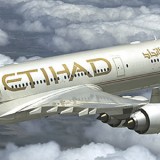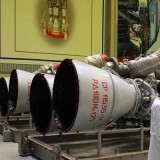French Army receives final NH90 Caïman tactical transport helicopter to replace its 60-year-old Puma

{loadposition bannertop}
{loadposition sidebarpub}
On February 4, 2025, the French Directorate General of Armaments (DGA) received the final NH90 Caïman Tactical Transport Helicopter (TTH) for the French Army at Airbus Helicopters’ Marignane facility. This delivery marks the completion of the NH90 procurement for the French Army, which has gradually replaced the Puma helicopters. The NH90 fleet is now integrated into the French Army’s aviation forces for tactical transport, medical evacuation, and logistical support missions.Follow Army Recognition on Google News at this link
The NH90 TTH is an 11-ton twin-engine transport helicopter developed for battlefield transport, medical evacuation, and airborne operations, featuring fly-by-wire controls, a composite fuselage, and modular avionics. (Picture source: 1er RHC)
The Aérospatiale SA 330 Puma is a twin-engine, medium utility helicopter developed in the 1960s to fulfill the French Army’s requirement for an all-weather transport platform. It is equipped with Turbomeca Turmo turboshaft engines and designed to carry up to 16 soldiers, six stretchers with four medical attendants, or up to 2,500 kg of cargo, either internally or externally via a sling. The Puma features an automatic blade inspection system, an anti-vibration gearbox, and a five-stage reduction transmission. It is capable of operating at night and in a range of environments, including Arctic and desert conditions.
The first prototype flew on April 15, 1965, with the first production aircraft entering service in 1968. A total of 697 units were produced between 1968 and 1987, including those built under license in Romania as the IAR 330. The design was further developed into the AS332 Super Puma and AS532 Cougar, extending its operational capabilities. The Puma has been used in both military and civilian applications, with deployments in various conflicts, including the Gulf War and the Falklands War. Some operators have modernized the platform with upgraded avionics, GPS navigation, and defense systems.
The French Army operates 63 NH90 TTH helicopters as part of its Army Light Aviation (ALAT) fleet, alongside modernized Cougar and Caracal helicopters. The NH90 has now replaced the Puma as the primary tactical transport helicopter, providing transport for up to 20 troops or 2.5 tons of cargo. In addition, 18 NH90 TTH helicopters specifically configured for special operations forces have been ordered in two batches—10 in 2020 and 8 in 2023. Deliveries of these specialized aircraft are scheduled between 2026 and 2029.
In addition to the Army’s NH90 TTH variant, the French Navy operates 27 NH90 NATO Frigate Helicopters (NFH), designated “Caïman Marine,” for anti-submarine warfare (ASW), anti-surface warfare (ASuW), and maritime search and rescue (SAR) operations. The NH90 NFH is equipped with a dipping sonar, MU90 torpedoes, and advanced sensors to perform its assigned missions. The type is replacing older platforms, including the Lynx and Super Frelon helicopters, in French naval aviation.
The NH90 TTH is an 11-ton twin-engine transport helicopter developed through a European cooperative program involving France, Germany, Italy, the Netherlands, and Belgium. It is designed for battlefield transport, medical evacuation, and airborne operations, featuring fly-by-wire controls, a composite fuselage, and modular avionics. The helicopter has a cruise speed of 300 km/h, a range of 880 km (1,600 km in ferry configuration), and a service ceiling of 3,500 meters. It is equipped with rappel systems, fast-roping points, a rear ramp, and provisions for door-mounted machine guns.
The NH90 program originated in the late 1980s as a joint NATO initiative to develop a new generation of multi-role military helicopters. NHIndustries, a consortium formed by Airbus Helicopters, Leonardo (formerly AgustaWestland), and Fokker, manages the program. The first prototype flew in 1995, and the helicopter entered operational service in 2007. As of March 2024, 515 NH90s had been delivered to multiple countries, with production continuing.
The NH90 has been introduced into service by multiple operators, with varied experiences regarding its performance and maintenance requirements. Countries such as Germany, Italy, and France continue to use and upgrade their NH90 fleets, incorporating new mission systems and improved sustainment processes. However, Norway and Australia have withdrawn the NH90 from service due to issues related to maintenance costs, availability rates, and operational sustainment challenges. The NH90 remains in production, with efforts underway to address operational limitations and improve serviceability across its variants.

{loadposition bannertop}
{loadposition sidebarpub}
On February 4, 2025, the French Directorate General of Armaments (DGA) received the final NH90 Caïman Tactical Transport Helicopter (TTH) for the French Army at Airbus Helicopters’ Marignane facility. This delivery marks the completion of the NH90 procurement for the French Army, which has gradually replaced the Puma helicopters. The NH90 fleet is now integrated into the French Army’s aviation forces for tactical transport, medical evacuation, and logistical support missions.
Follow Army Recognition on Google News at this link
The NH90 TTH is an 11-ton twin-engine transport helicopter developed for battlefield transport, medical evacuation, and airborne operations, featuring fly-by-wire controls, a composite fuselage, and modular avionics. (Picture source: 1er RHC)
The Aérospatiale SA 330 Puma is a twin-engine, medium utility helicopter developed in the 1960s to fulfill the French Army’s requirement for an all-weather transport platform. It is equipped with Turbomeca Turmo turboshaft engines and designed to carry up to 16 soldiers, six stretchers with four medical attendants, or up to 2,500 kg of cargo, either internally or externally via a sling. The Puma features an automatic blade inspection system, an anti-vibration gearbox, and a five-stage reduction transmission. It is capable of operating at night and in a range of environments, including Arctic and desert conditions.
The first prototype flew on April 15, 1965, with the first production aircraft entering service in 1968. A total of 697 units were produced between 1968 and 1987, including those built under license in Romania as the IAR 330. The design was further developed into the AS332 Super Puma and AS532 Cougar, extending its operational capabilities. The Puma has been used in both military and civilian applications, with deployments in various conflicts, including the Gulf War and the Falklands War. Some operators have modernized the platform with upgraded avionics, GPS navigation, and defense systems.
The French Army operates 63 NH90 TTH helicopters as part of its Army Light Aviation (ALAT) fleet, alongside modernized Cougar and Caracal helicopters. The NH90 has now replaced the Puma as the primary tactical transport helicopter, providing transport for up to 20 troops or 2.5 tons of cargo. In addition, 18 NH90 TTH helicopters specifically configured for special operations forces have been ordered in two batches—10 in 2020 and 8 in 2023. Deliveries of these specialized aircraft are scheduled between 2026 and 2029.
In addition to the Army’s NH90 TTH variant, the French Navy operates 27 NH90 NATO Frigate Helicopters (NFH), designated “Caïman Marine,” for anti-submarine warfare (ASW), anti-surface warfare (ASuW), and maritime search and rescue (SAR) operations. The NH90 NFH is equipped with a dipping sonar, MU90 torpedoes, and advanced sensors to perform its assigned missions. The type is replacing older platforms, including the Lynx and Super Frelon helicopters, in French naval aviation.
The NH90 TTH is an 11-ton twin-engine transport helicopter developed through a European cooperative program involving France, Germany, Italy, the Netherlands, and Belgium. It is designed for battlefield transport, medical evacuation, and airborne operations, featuring fly-by-wire controls, a composite fuselage, and modular avionics. The helicopter has a cruise speed of 300 km/h, a range of 880 km (1,600 km in ferry configuration), and a service ceiling of 3,500 meters. It is equipped with rappel systems, fast-roping points, a rear ramp, and provisions for door-mounted machine guns.
The NH90 program originated in the late 1980s as a joint NATO initiative to develop a new generation of multi-role military helicopters. NHIndustries, a consortium formed by Airbus Helicopters, Leonardo (formerly AgustaWestland), and Fokker, manages the program. The first prototype flew in 1995, and the helicopter entered operational service in 2007. As of March 2024, 515 NH90s had been delivered to multiple countries, with production continuing.
The NH90 has been introduced into service by multiple operators, with varied experiences regarding its performance and maintenance requirements. Countries such as Germany, Italy, and France continue to use and upgrade their NH90 fleets, incorporating new mission systems and improved sustainment processes. However, Norway and Australia have withdrawn the NH90 from service due to issues related to maintenance costs, availability rates, and operational sustainment challenges. The NH90 remains in production, with efforts underway to address operational limitations and improve serviceability across its variants.




